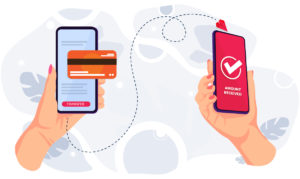The Evolving Market
The international money transfer market is evolving to meet the needs of today’s clients. Digital remittances are one of the fastest growing sectors of the money transfer market. In fact, the Digital Remittances segment is expected to reach US$3.06bn in 2022. The market evolution can be credited to increasing globalisation and the fund transfers from migrant workers to their families. The customers are seeking a quick, seamless and transparent experience.
The transfer market is becoming progressively digitally effective, and the complexities of different currencies and banking systems are being simplified by new technology developments—such as embedded solutions, crypto space (the world of cryptocurrencies), blockchain etc.
As consumers become more comfortable with eCommerce and online banking, they will demand greater efficiency from traditional companies like Western Union and MoneyGram and look to newer players like Crosspay – which will result in better service and lower fees for customers. Here we look at some of the causes and effects of the evolving market.
Better Money Transfer
For companies and individuals who regularly transfer money across borders, the international money transfer market has advanced to meet their needs in a number of ways. First, the variety of options available to customers has changed over time, as new technologies arise and traditional methods fall out of favour. Second, fees for these services have fallen significantly since 2008 (when they were at an all-time high). Third, managing payments in a foreign currency is becoming more vital, and digital banking provides solutions to accept payments without having to convert them into local currencies which saves time and cost for both parties involved in the transaction.
The World bank says remittance flows to low- and middle-income countries (LMICs) are expected to increase by 4.2 percent this year to reach $630 billion. According to data from SWIFT a few years ago, the global money transfer industry saw a growth rate of over 8%, with over $1tn sent out via money transfers across borders every year. This figure is expected to rise significantly in coming years as more people use digital banking services and mobile wallets to make payments abroad.
These trends are likely to continue as more people use digital transactions instead of paper cheques or cash payments. If this continues to grow at its current rate, it will reduce costs for consumers by increasing competition for business within this industry

Ease of Use
The restraints on movement due the pandemic led to a limited visits to retail locations for remitting money. People started to progressively depend on digital payment methods to conduct various transactions, thus changing the way people manage their finances and payments.
The Fees at an all-time Low
The average fee to transfer money has dropped to an all-time low. In 2015, the average cost was $4.89 per transaction. In 2016, the average cost was $4.79 per transaction and in 2017 it fell another 12% to $4.39 per transaction on average globally. Sending money around the world is now cheaper than sending a text message or making a phone call in most parts of the globe!
Cross-Border Ecommerce Rising
Cross-border eCommerce is growing. Global consumers are becoming more comfortable with buying goods online, and global retailers are becoming more comfortable with selling to consumers outside the country. Ecommerce is growing in emerging markets, but it’s also flourishing in developed ones.
Meeting today’s needs
The transfer market is evolving in response to clients’ changing needs. In today’s business environment, speed and convenience are at a premium when it comes to monetary transactions. Business transactions are taking place around the globe on a regular basis, with individuals and organizations looking for ways to increase efficiency while cutting costs.
The market has responded with new technologies like MTO’s that make it easier than ever before for your company to send money internationally. These innovations include mobile apps and services that let you send money instantly using only your phone number and recipient’s name or email address – no more waiting days for funds transfers!
❝No more waiting days for funds transfers.❞
Personal remittances
Using MTO’s for personal remittances, or money sent from a migrant worker to his or her family, are becoming more popular.
In most cases, personal remittances are sent home for emergencies and special occasions like weddings. However, as the price of international money transfers becomes cheaper, more people are using this method for regular payments such as school fees and utility bills. In a study of migrants in the US, Canada and the UK, it was found that personal remittances were most popular with people from Asia and Africa. This is because these workers have families back home who are dependent on their income.
The Global Cross-Border Payment Landscape
The MTO’s like Crosspay play an important role in the money transfer market. By understanding our customers’ needs and providing a service that meets those needs, we can remain competitive in this increasingly crowded industry. We believe that understanding our customers is the key to success. We want to make it as easy as possible for our customers to send money overseas, and we do this by offering a range of convenient payment methods. We also provide competitive exchange rates and low fees, which makes us stand out from the competition.